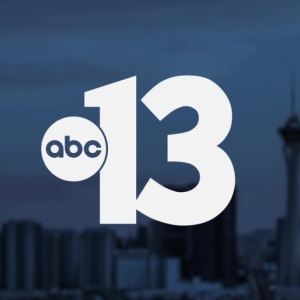LAS VEGAS (KTNV) — What does it take to be a Formula 1 race marshal?
That's what hundreds of Southern Nevadans are discovering as they go through marshal training, which is being hosted by the Las Vegas Grand Prix.
In June, I told you about the program and LVGP officials said all of the open training spots filled up quickly.
"We had 3,000 people apply and of that, 800 were selected to come to the training sessions. We will have about 600 marshals that will work the race," said Silvia Bellot, Vice President of Sporting and Race Operations at Las Vegas Grand Prix, Inc. "When selecting the applicants, we also took into account everyone who had a bit of firefighting experience, CPR experience, and people who have also been part of other events who understand how demanding we are, who understand they are exciting days but long hours. We are very proud to say that so far, we have increased the number of women in our event. We went from 5% to 14% at our event. We also want to have more locals in general and other communities. We know that Asian and Latino communities are here in Las Vegas and we want to make sure the sport is more inclusive."

Saturday was the first of four sessions that the Las Vegas Grand Prix is hosting for future marshals. There are four different areas that marshals could work in during the race.
- Flagging and Communications Marshals: Responsible for communicating track conditions using various flags as well as safety car boards and light signals to Race Control via radio
- Intervention Marshals: Provide assistance during on-track incidents, offer trackside support for drivers and fellow marshals and aid in vehicle recovery. They must be able to carry a 20 pound fire extinguisher, run long distances and feel comfortable on a hot track with cars and safety equipment.
- Pit lane and grid marshals: Assist with pit lane and grid safety and discipline
- Marshal support: Aid in hospitality, registration, equipment management and transport for other marshals
Bellot walked me through some of the things that marshals were learning.
For example, the majority of marshals will wear orange overalls, which are fire retardant. The intervention marshals will also wear helmets as well as three layers of gloves: cotton gloves, rubber gloves, and electrical gloves.
"The reason we use all of these gloves is because Formula 1 cars are hybrids. They've got an electrical system. The marshals are not allowed to touch the cars until they make sure the cars are safe," Bellot explained. "Once the cars are safe, we still give them the electrical gloves to make sure they're safe."
Marshals will also have safety card boards, which will be shown to drivers on the track as directed by race control.

When it comes to flags, there are 10 different flags that you might see during the race.
- Red Flag - The practice or race session is being suspended.
- Blue Flag - A faster car is attempting to pass.
- Yellow Flag - Dangerous conditions are on the course. Reduce your speed and do not overtake another vehicle.
- Green Flag - The track is clear.
- Red & Yellow Striped Flag - There is deterioration of grip on the track due to oil and/or water.
- White Flag - A much slower vehicle is on the track. For example, a safety car.
- Black Flag With Orange Circle - A vehicle is experiencing a mechanical problem on the track. You must pit during the next lap.
- Black Flag - A driver must stop at his designated pit position.
- Black & White Flag - A warning has been issued for unsportsmanlike behavior.
- Checkered Flag - It is the end of a practice session or race.

Marshals also learned how to remove a vehicle from the track.
For Saturday's session, race officials created a replica of Turn 6, which is near the Sphere, and had a Formula 4 car so they could demonstrate how to remove the vehicle safely.
WATCH: Las Vegas Grand Prix officials show how vehicles are safely removed from the track
According to Bellot, the Las Vegas Grand Prix is the only American race that is offering marshal training. She says other circuits have shown interest and that Miami officials are looking at implementing a similar training program.
Bellot grew up in a motorsports family and previously worked as a race marshal. She says it's rewarding to pass on that knowledge.
"At that time, I was so excited just to be part of motorsports that I would absorb anything anyone would teach me, how to do the flags, how to recover a car, understanding what work needed to be done by officials at the event," Bellot said. "I think I'm more excited to be able to pass this knowledge on to the next generation."
While the application period for race marshals is closed, Bellot said there will be other opportunities for Southern Nevadans to be involved in race week this year.
As we get closer to the event, race officials say you can visit f1lasvegasgp.com/get-involved to see the latest opportunities.







